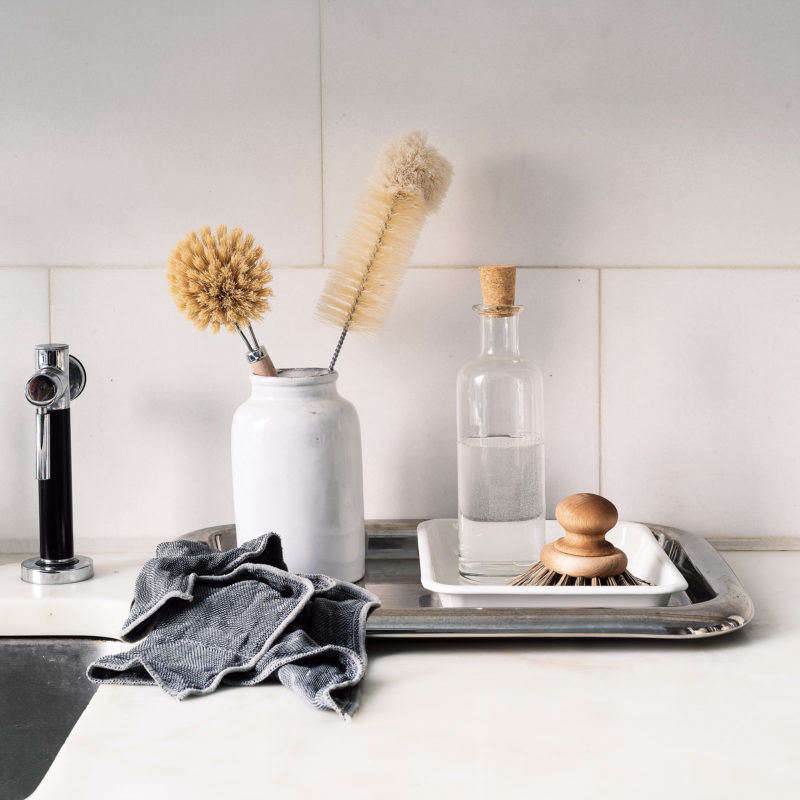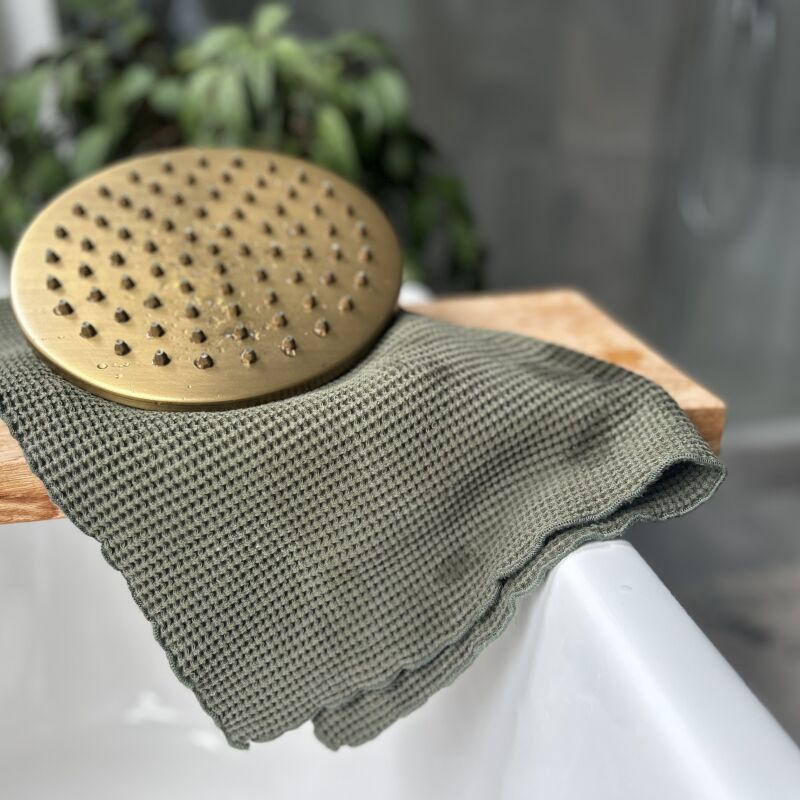Used on a daily basis, our dishwashers are subjected to a near constant barrage of food, soap, and grease. Over time all this grime takes its toll in the form of mildew, hard water stains, soap scum buildup, and those mysterious bits of goo wedged in crannies and floating on the bottom. Yuck! When that happens, it’s time to give this workhorse of a machine its own thorough cleaning. Here’s how.
Photography by Justine Hand for Remodelista.
Supplies
- White vinegar
- Baking soda or borax
- Small cleaning brush, such as a toothbrush
- Toothpick or wooden skewer
- Cloth rags
- Bowls large enough to soak dishwasher parts
- Screwdriver (only needed if you have parts with screws)
Instructions for Cleaning a Dishwasher
Step 1: Remove the trays and utensil holder so that you can access the inner workings of the dishwasher. If necessary, use a screwdriver to take out parts that need cleaning.
Step 2: Clean all removable parts by soaking them and scrubbing as needed.
Above: Immerse removable pieces in a bath of soapy hot water.
Above: While other parts are soaking, give any areas that have extra mildew or hard water stains a vigorous scrub using baking soda and a toothbrush. For extra whitening power, you can mix in some hydrogen peroxide, which combines with baking soda without any harmful effects.
Step 3: Clean the interior.
Sprinkle more baking soda (or borax, see below) over the soap dispenser and other nonremovable parts. Scrub these areas with your toothbrush and for particularly tight areas, use a toothpick or wooden skewer. Be sure to check the water holes to make sure they’re clear of debris. Also inspect and clean the bottom and drain area of the machine.
Note: In place of baking soda, you can use borax (sodium borate). A naturally occurring mineral powder commonly used in detergents—and sold on its own as a laundry booster—borax kills mold, deodorizes, and whitens.
Above: Rinse your toothbrush and apply vinegar to clean the rubber seal around the edges of your machine. Be sure to work the bristles in-between the lining to get at mildew and food deposits.
Above: Using a rag soaked in vinegar, gently clean the front and sides of the door, including the controls area.
Step 4: Replace the parts you removed and run your machine using nothing but vinegar.
Vinegar, or acetic acid, is an excellent cleaner useful for sanitizing, polishing metal and glass, killing mildew, and dissolving soap scum. To harness this power in your dishwasher, pour two cups of vinegar on the bottom of the machine.
Important note! Never mix vinegar with bleach when cleaning your machine—or anything else. Doing so will release toxic chlorine and chloramine vapors. Also never use bleach or any cleaner containing chlorine (hydrochloric acid) in a stainless steel machine. It can stain and corrode the metal.
Above: Run the machine on the sanitize or hot cycle.
Step 5: As a final polish, give your machine a baking soda cycle.
Sodium hydrogen carbonate, or baking soda, is also a good cleaning agent, useful for getting rid of odors, removing grease, and whitening stains. (But don’t mix it with vinegar! As a base, baking soda will neutralize this acid and visa-versa, canceling out the positive effects of both.)
If your machine is still not clean after the vinegar cycle, add one cup of baking soda to the bottom and run again. I like to alternate between a vinegar bath one month and baking soda the next. For machines that suffer from mineral deposits and stains due to well water, it may be necessary to use a dishwasher-safe stain and rust remover.
You can also use borax to clean your machine. The beauty of borax is that it can be applied while there are dishes in the machine. Simply load your dishwasher as usual, add 1/4 cup of borax to the bottom, add normal detergent to the dispenser, and run as usual. Your glasses will sparkle.
Above: A clean machine ready for work.
Above: Maintain a clean dishwasher by repeating this process once a month.
N.B.: This post is an update; the original story ran on July 16, 2015.
Get your whole house gleaming with these easy care tips:
- Domestic Science Tip: How to Clean Your Washing Machine
- Linen Logic: 20 Tips for Taking Care of Your Bedding
- The Only Two Ingredients You Need to Make Your Refrigerator Smell Fresh
- 10 Natural Cleaning Solutions for the Bathroom
Finally, get more ideas on how to evaluate and choose a kitchen dishwasher in our Remodeling 101 Guide: Kitchen Dishwashers.

















Have a Question or Comment About This Post?
Join the conversation